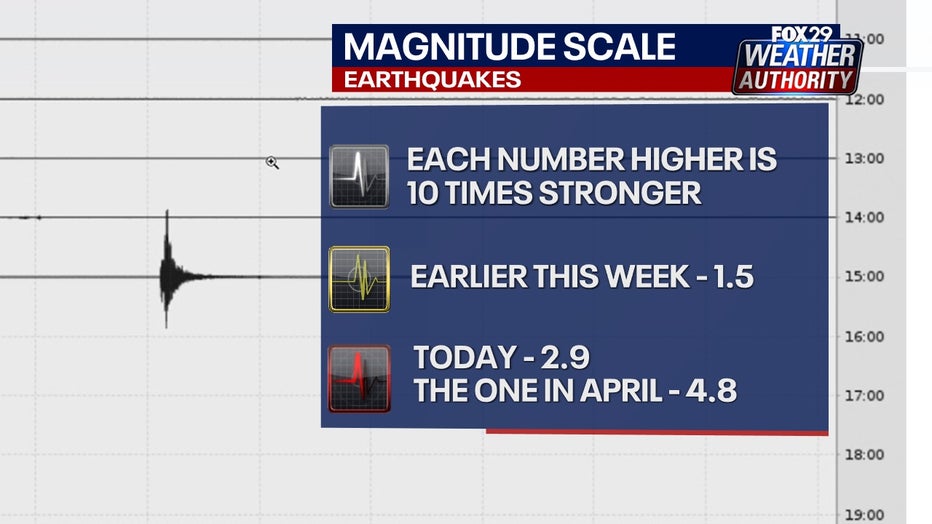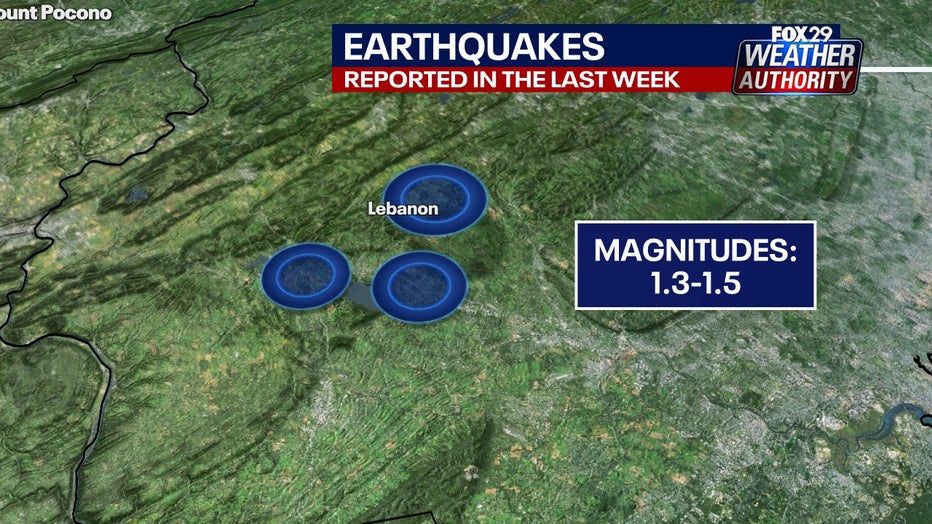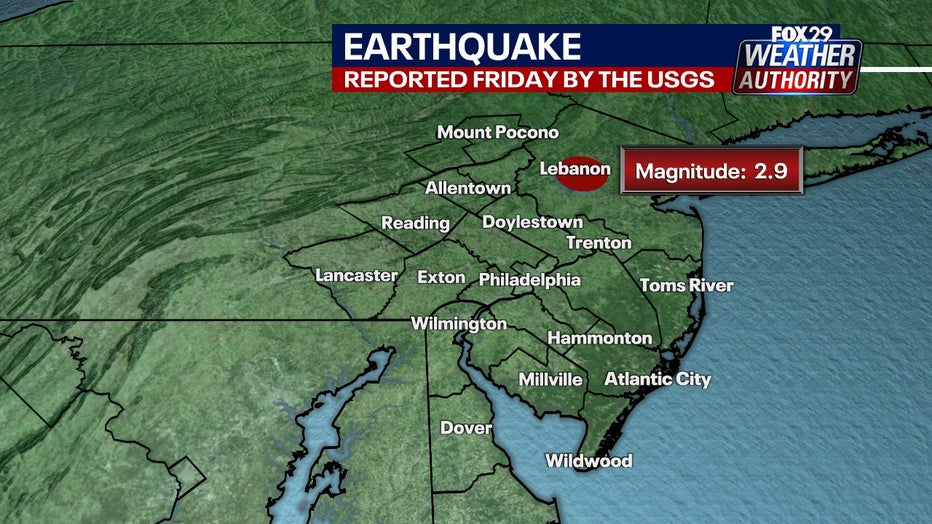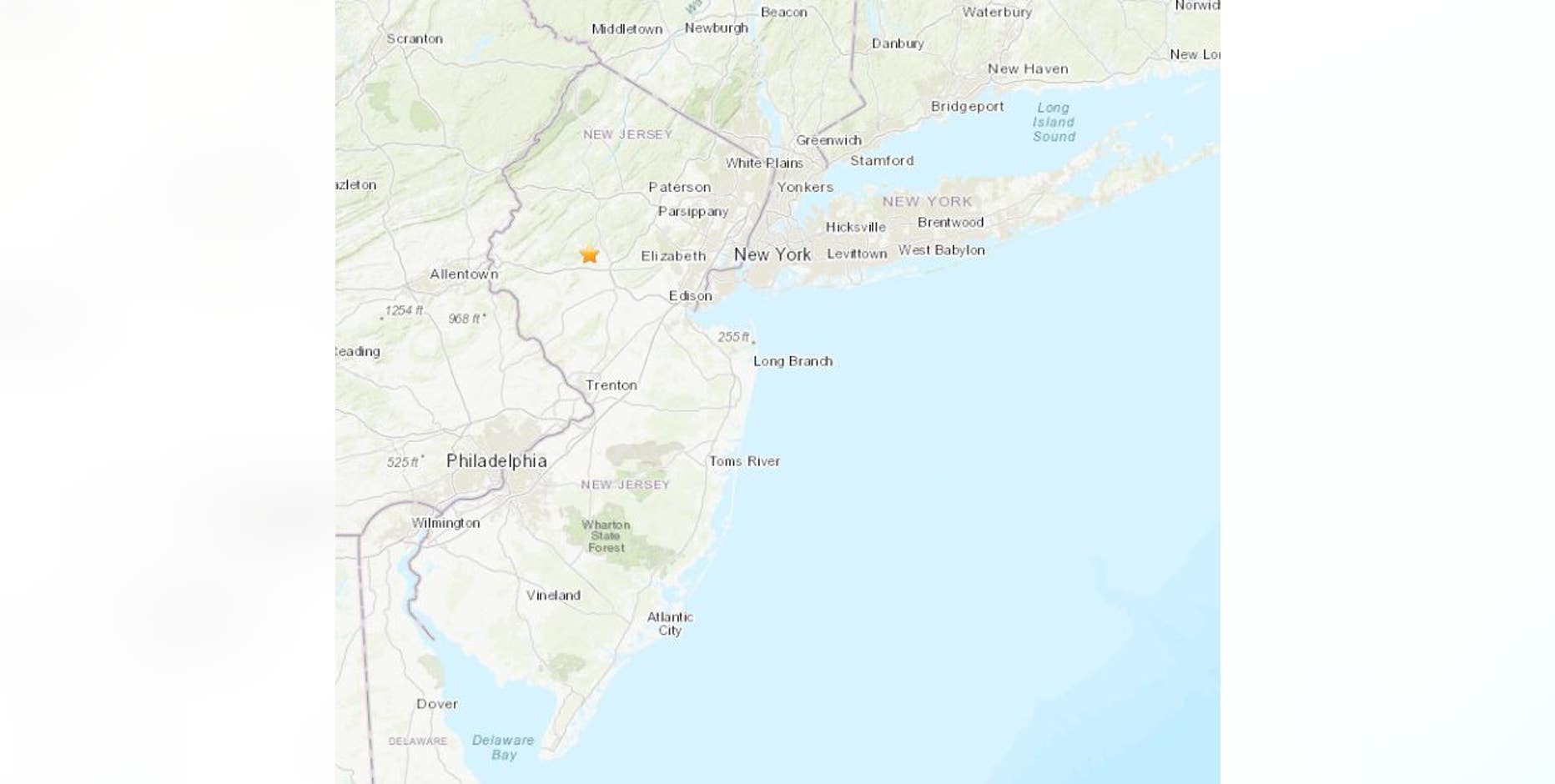New Jersey Earthquake: What is cause of recent increase in earthquakes? Is there potential for more?

What is causing the recent earthquakes
A USGS scientist explains why there's been a recent uptick in earthquakes and aftershocks in the region.
PHILADELPHIA - We had a 2.9 magnitude Friday that some people felt. We also had three other earthquakes this week that ranged from magnitude 1.3 to 1.5.
But, it’s likely no one felt those.
Each higher number on the magnitude scale is 10 times stronger. This is why some people felt Friday’s 2.9 and a lot of people in the Northeast felt April’s 4.8.

This week’s earthquakes are really aftershocks from April’s.

We talked to a USGS scientist, who said these aftershocks can last from months to years. These aftershocks happen because a bigger earthquake reactivates some of the unstableness at a fault.
Earthquakes are caused by faults, which are cracks in rock areas below our feet. We have faults around here because of our mountains. When mountains, like the Poconos, formed, there were leftover cracks in the rocks.
Scientists are not sure which fault caused our April earthquake.
So, universities from across the country and the USGS, the government agency that studies earthquakes, have recently set up hundreds of seismometers in an all-out effort to better understand what fault caused the earthquake and future potential.

We do have a lot of faults in our region, according to USGS scientist Oliver Boyd. We don't hear about them a lot because they're not as active as the ones out west, like in California.
There, rock plates are actively coming together or sliding past each other. Here, in the east, the cracks in the rock are getting reactivated by typical Earth forces.
The weight of our nearby mountains is one example of a force. For example, when a big mountain pushes down on the ground, it adds extra weight to that area.
Other potential causes are moving rock plates. Rock plates are actively separating in the middle of the Atlantic Ocean.

In fact, it's happening where Iceland is. It's part of the reason why Iceland has so many volcanoes and earthquakes. The force of those rock plates separating adds a pushing force toward us.
The way magma (underground lava) moves and hits the rock below our feet is another force that can lead to earthquakes at old faults.
One more earthquake cause is how the ground here in the east is shifting. Our ground is still feeling the effects of glaciers from the last ice age.
Think of our ground as a memory foam pillow. When you take your head off a memory foam pillow, it takes a few seconds for that pillow to adjust and look normal again.
The ground up in New England is actually rising up as it still adjusts from the weight of the glaciers now gone. That comes at the expense of our area where the ground is sinking to compensate.
This seesaw of ground movement between the Mid-Atlantic and New England is another potential reason for the recent New Jersey earthquake. That seesaw is also leading to a little extra rise and sea level at our beaches.



